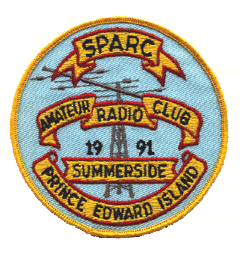Foundations of Amateur Radio
When should I go on air?
When you obtain your license there’s a whole lot of learning to be had before you even get started with your first transmission, but when you get there you’ll discover that learning has just begun and the rest of your life will be beset with challenges, quests, discovery and dawning understanding.
One of the early and recurring questions is around the best time to be on air. Before I get into the why, the answer is, right now.
This interminable question will continue to haunt you throughout your life, and the most pressing answer will be shaped around the missed opportunity. You’ll discover tools that assist with predicting propagation, web-sites that explain what the various layers of the ionosphere do and how they affect your ability to use radio to make contact with other amateurs.
There’s learned discussion around testing and tracking propagation, special modes that help create your own maps for your own station and you’ll discover an endless supply of experts who will advise you when you should power up your transceiver and call CQ.
Whilst I’ve only been an amateur for a short time. In the decade to date I’ve learnt one thing about propagation. Despite all the tools, the discussion, the maps and forecasts, there is no substitute for actually getting on air and making noise. Over the past while I’ve been watching the propagation from my own shack using a 200 milliwatt beacon and I’ve discovered that running 24 hours a day, every day, well, almost every day, my signal gets to places far beyond my wildest dreams.
I have also discovered trends. That is, the average distance of the signal reports is increasing over time. This isn’t a linear thing, not even a recurring thing, much like the ebb and flow of the tides, varying from day to day, a little bit at a time, inexorably making your shoes wet when you least expect it.
While to some extent we’ve tamed the prediction of the tides with complex and interrelated cycles, discovered by using Fourier transforms, we’re no-where near achieving this level of sophistication for the ionosphere and its associated propagation.
Just like predicting a specific wave is still beyond the capabilities of a tide table, predicting the ability of a radio wave to make it from your antenna to that of another amateur is beyond any tool we have today.
Another way to look at predicting the complexity associated with the ionosphere is comparing it to weather forecasting. We have national forecasting bodies, with millions of sensors, super computing cycles that dwarf most other research, a global network of satellite sensors, roughly a quarter of which have some form of earth sensing capability, transmitting terrabytes of data every day and still we cannot determine where on Earth it’s going to rain tomorrow.
The ionosphere, whilst it’s being monitored, is not nearly as well resourced. It’s not nearly as visible to the average person as the packing of an umbrella and the political perception of need is nowehere near as urgent as getting the weather right.
So, absent accurate forecasting, finding a better way to determine when to get on air is required. That said, I’ve discovered that regret is the biggest motivator to get on air. The day after a contest when a friend made a contact with an amazing station, or the lunch break where I didn’t power the radio on to discover a random opening to a clamouring horde of calls looking to make contact.
So, my best advice to you is to get on air whenever you can. You might not make a contact every time, but you’ll discover what the bands look like right now and you’ll have the chance of hitting the jackpot with a rare contact and truth be told, I think your chances of making a contact are higher than winning the lottery.
When you do take that step, you’ll start discovering the ebb and flow of the bands, discover the characteristic sound that each band makes and what a band sounds like when it’s open and when it’s not. You’ll hear stations far and wide, discover that while there are trends in propagation, there are no rules. From one moment to the next, you’ll discover the thrill of hearing something unexpected.
One thing to consider, if you get on air for the sole purpose to make contacts, you’re likely going to be disappointed. It’s like fishing. Most people don’t get up at some crazy hour, sit on a damp jetty, freezing parts of their anatomy off for the sole purpose of catching fish.
So, get on air and make some noise, today.
I’m Onno VK6FLAB
• This article is the transcript of the weekly ‘Foundations of Amateur Radio’ podcast, produced by Onno Benschop, VK6FLAB who was licensed as radio amateur in Perth, Western Australia in 2010. For other episodes, visit http://vk6flab.com/. Feel free to get in touch directly via email: cq@vk6flab.com
• If you’d like to join a weekly radio net for new and returning amateurs, check out the details at http://ftroop.vk6flab.com/, the net runs every week on Saturday, from 00:00 to 01:00 UTC on Echolink, IRLP, AllStar Link, Brandmeister and 2m FM via various repeaters, all are welcome.
